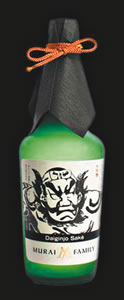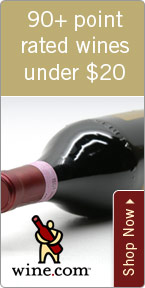Judging The Subtle Nuances Of Sake

Wednesday - September 02, 2009
| Share
 Del.icio.us
Del.icio.us
|
This past week I participated as a judge at the National Sake Appraisal, where we tasted through almost 300 Sake entries. Needless to say there were some fabulous Sakes. It was an incredible experience unlike any other wine event I’ve ever been a part of.
Sake judging is quite different from wine judging. The philosophy behind tasting Sake comes from the mindset of looking for faults. A Sake’s harmony is of utmost importance. The aroma, flavor and aftertaste don’t carry as much weight as they would in wine judging. The purity, overall impression and balance of a Sake is most appreciated. Color is not even an afterthought and plays no part in the evaluation.
Most wine judges and critics look mostly for flavor intensities and boldness in wine. Yet, I think my appreciation for finesse, complexity and delicacy really helped me transition my palate from wine tasting to Sake tasting. There is a very Zen-like quality to the tasting,where everyone is virtually silent. Notes are not shared and discussion happens only in between the category tastings. The Sake is really the only thing “speaking.” Complete concentration is a requirement, especially since there are so many to taste.
The Sake was judged according to category: Daiginjo, Ginjo or Junmai, regardless of region or dryness. None of the samples was sweet, but there was definitely a distinction in dryness as well as acidity levels. After tasting all the entries in one category, only the top picks went on to the second or “medal” round. We retasted the ones that made it into the second round and only the top picks received either gold or silver medals.

|
There were a total of 10 judges; six from Japan and four from the U.S. Two, including myself, were from Hawaii. I was honored to be a part of this grand event. I was the lone “rookie,” and I could tell that the other tasters were highly educated technical tasters as names of chemical compounds rolled off their lips as easy as a taste of Sake.
One of the traditions in Sake judging is that everyone tastes from the same cup. You have to make sure that you don’t “backwash” or that you don’t taste “too much.” Although the germophobe in me cringed at the thought of having to taste from the same cup as nine other people, it makes sense to me, as you would want each judge to experience the Sake the exact same way, not influenced by cup size or shape. I’m happy to say that I didn’t fall ill afterwards. I’m sure the alcohol, which is on average higher than unfortified wines, killed off any germs.
Perhaps the one thing that was really impressed upon me from this experience is the concentration on harmony and balance of Sake. It is something that I will certainly be more aware of in everything that I drink.
I am honored and extremely thankful for the opportunity to take part in such a fabulous event. My thanks goes out to Chris Pearce of World Sake and his staff for making the experience unforgettable.
Sake Recommendations: Murai Family Daiginjo ($65) A gold medal winner in its class, smooth, complex, extremely well balanced; really classy Sake. Miyasaki Brewing Company Masumi Yumedono Daiginjo ($95) This is superbly refined and has a depth of flavor that anyone can appreciate; truly memorable.
Roberto Viernes is a master sommelier. E-mail .(JavaScript must be enabled to view this email address)E-mail this story | Print this page | Comments (0) | Archive | RSS Comments (0) |
Most Recent Comment(s):












